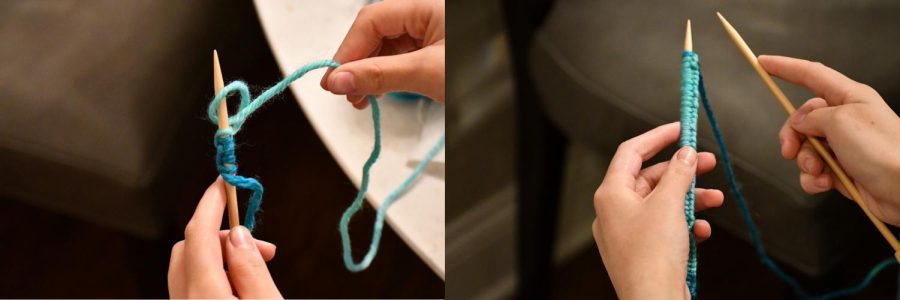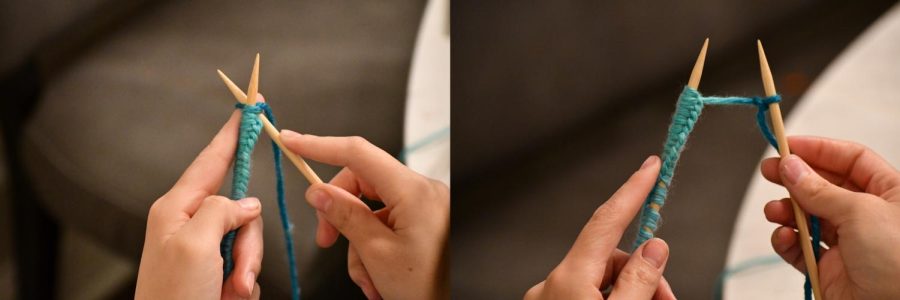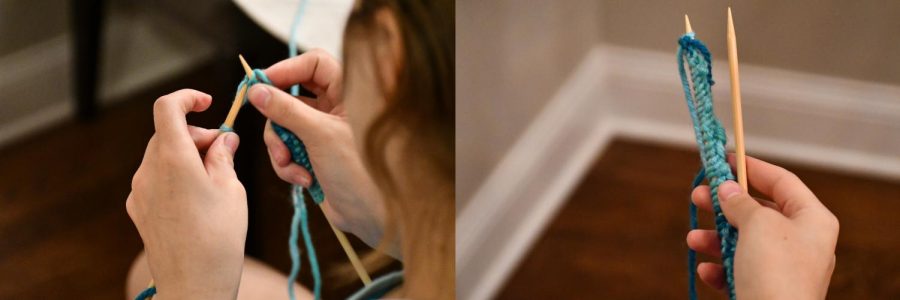Grab a pair of needles and try knitting
As each day marks a step towards an increasingly digital and technology-dominant world, there is value to revisiting less modern pastimes. What better way to be both creative and relaxed; artistic and functional, than knitting? Knitting has long been a primary aspect of garment making and has maintained its prominent role in both fashion and crafting throughout the 21st century.
This ancient art form dates back to the fifth century Middle East, and the oldest preserved item of knit clothing is a pair of socks from Egypt, likely produced around 1000 CE. While knitting can be viewed as an art form or hobby, it is also a massive industry, especially in terms of clothing production.
Benefits
Thorough research has suggested that the benefits of knitting are abundant. Generally, knitting has been proven to decrease stress, improve cognitive function, and cultivate feelings of accomplishment. In light of national spikes in mental health problems—especially throughout the COVID-19 pandemic—the correlation between domestic crafts and improved wellbeing is no secret. Multiple in-depth studies conducted in recent years have investigated knitting specifically, and their results overwhelmingly supported this same notion. In a study published in 2021, researchers investigated the effects of knitting on cancer patients’ stress and cognitive function. Cancer survivors experiencing cancer-related cognitive impairment (CRCI) underwent a standardized program to learn how to knit. In measuring cognition and stress both prior to and after the program, researchers discovered that 69% of the test subjects had clinically compelling changes in one or more cognitive sectors.
The correlation between domestic crafts and improved wellbeing is no secret.
Knitting At SPA
If the benefits of knitting are numerous and the craft can so easily double as a creative outlet, it’s no wonder knitting has found its home at SPA. During the weekly X-period club time slot, color-blocked scarves; tangled skeins waiting to be wound into balls; and needles of every shape, size, and variety; fill room 4255. A calm energy undertoned by pleasant chatter represents the essence of Knitwits: a student-facilitated club designed for all current or future knitters. The Knitwits student leaders, Divya Bhargava and Marie Schumacher, gather with their club members to share knitting progress, teach newcomers how to knit, eat snacks, and simply get a few rows in before the next class of the school day. While the experience level ranges between individuals, members undoubtedly draw from each other in both their artistic visions and their creativity.
So, how does knitting work?
There are many knit stitches that result in differing final products in both the texture and look of the cloth created. The most simple, a garter stitch, can be learned in a few basic steps:
1. Start by casting on to one of two straight needles. In order to cast on, make a slip knot with a long tail, then loop it onto the needle. Continue adding slip knots continuously until the knots on the needle have reached a desirable length. The thickness and weight of the yarn both are factors that will impact how many stitches are necessary to cast on for specific projects.

2. To begin the garter stitch after casting on, put the needle with the cast-on stitches in the left hand. The working yarn, or yarn coming directly from the ball, will need to be wrapped around the left pointer finger. After wrapping the working yarn around the left pointer finger, tuck it to the back of the left needle to insert the right needle from forward to back through the first loop of the cast-on stitches.

3. Next, hook the working yarn with the right needle and thread the yarn all the way through the stitch previously opened when originally inserting the needle. Finally, slip the cast-on stitch off of the left needle and repeat the process with the rest of the cast-on stitches from the left needle. After completing the first row, simply switch the left-hand needle into the right hand and repeat; knitting each row until the project has reached the intended length.

More in-depth knitting projects delve into other techniques and materials, however, even understanding the most basic roots of knitting catalyze a valuable understanding of the art form. Tutorials and project information are widely available on social media, such as Pinterest or Tik Tok and other platforms. With SPA’s own knitting club readily available to field any questions, Knitwits is also a valuable resource. Taking up knitting is more than picking up a hobby. It is taking advantage of the wellness benefits knitting brings and carrying on the historical beauty of this unique craft.
My name is Clara McKoy (she/her). I’m the director of The Rubicon Online. At school, I’m involved in Community Action and Service Club and Senior...